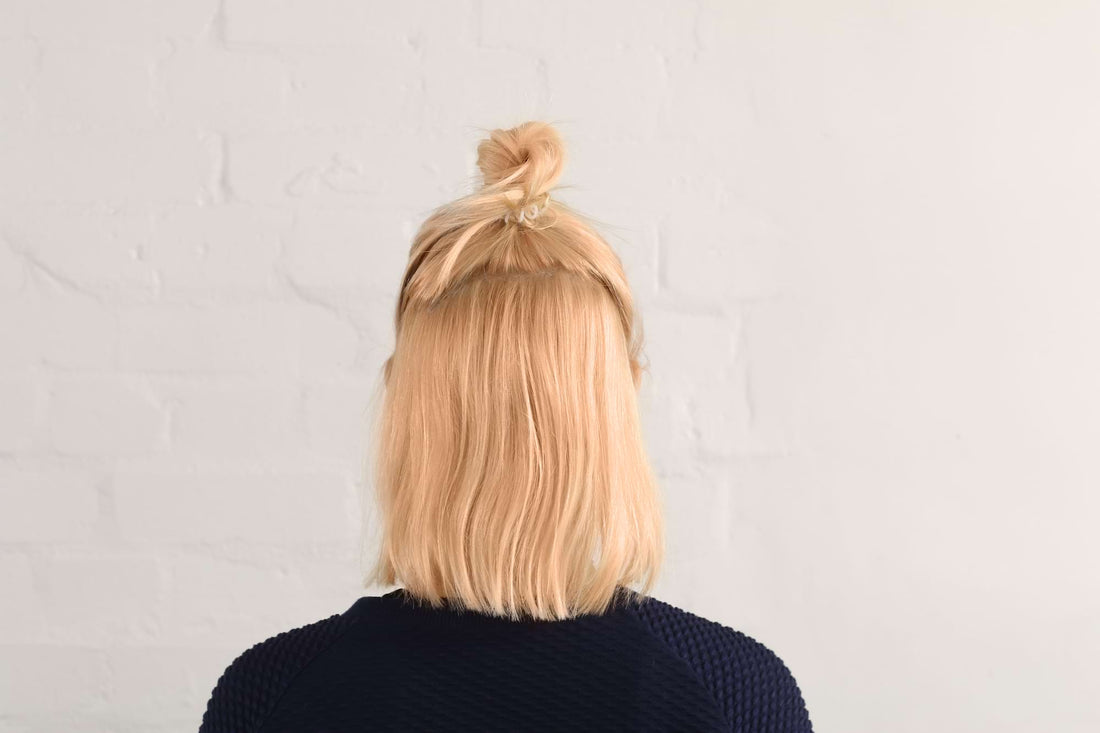A common tale of woe amongst those in search of long, luscious locks is that whatever they try, they simply can’t seem to grow their hair out past a certain length. It’s an extremely frequent complaint, but you can finally put down the olive oil and scalp-stimulating shampoo, because we think we might have a much easier solution.
What feels like a lack of hair growth often isn’t - hair can be growing at its normal rate, but breakage makes it feel like it’s not getting anywhere. Breakage happens when hair becomes dehydrated and brittle, or lacks protein. This can be due to the use of hot tools or straightening irons, and lightening treatments, which dehydrate the hair leaving it limp and damaged. For this reason, we’re bringing you a masterclass on minimising breakage and repairing your hair so that it’s less likely to break in the future, complete with product recommendations and styling tips from Glasshouse director Olivia.
Hair is made up of a protein called keratin, and so when we remove protein from the hair (through lightening processes and the use of hot tools), it becomes weaker and therefore more likely to break. “By far the most common cause of breakage that I see is use of straightening irons and hot tools,” says Olivia. “The high heat of straightening irons suck moisture from the hair, degrading the protein and moisture levels, making it brittle and susceptible to breakage.” In order to minimise breakage, it’s extremely important to protect your hair before you use hot tools of any kind - that’s where Organic Colour Systems’ Thermal 2 Twenty comes in - it’s a super lightweight formula that offers hair protection against temperatures of up to 220 degrees, whilst also improving the smoothness of the hair’s surface. For a straighter look, you should always opt for a hairdryer over irons: “Imagine how much gentler a hairdryer would feel against your skin than a tong or straightening iron - be as kind to your hair as you would to your skin!”. If you just can’t move away from those irons, at the very least try turning the temperature down a few notches to minimise the damage caused.
”Unlike skin, however, hair is not self-repairing - that’s up to us, in terms of what we use on it,” Olivia continues. Indeed another leading cause of breakage is colour damage, usually caused by bleach and hair colourants, the worst culprit being ammonia due to it’s high PH and ability to degrade natural protein in the hair. Using ammonia-free hair colour is much friendlier to hair, minimising the possibility of breakage. Our in-house range of tints from Organic Colour Systems leave hair in exactly the same condition and pH level as it came to us in. If the hair is in a fragile state, repairing and colouring can be done on the same day to achieve the best possible colour results.
If your hair has undergone the stress of lightening and heat, or if it’s just naturally susceptible to low protein levels (this is often the case with fine hair), we highly recommend starting with the right shampoos and care products at home as well as in the salon. Sulphate free shampoo is a good place to start. At Glasshouse, we stock a number of sulphate-free shampoos designed to put protein back into the hair. Organic Colour Systems’ Power Build range has everything you need to repair hair which is prone to breaking. “Washing with the PowerBuild shampoo gently opens the hair cuticle, and whilst most treatment conditioners work cosmetically on the outside of the hair, the Power Build reconstructive treatment enters the cuticle and repairs from the inside. Used after, the Powerbuild conditioner then seals the hair cuticle back into place without the use of silicones and plastic based ingrediants” Olivia notes. Our go-to product to stop breakage in its tracks is Power Build Revamp, a spray-in treatment containing wheat and quinoa proteins that, used weekly, actively replaces the protein the hair has lost.
The tools and accessories we use on hair can also play a big part in preventing breakage. “Hair breakage often occurs when hair is wet as it’s in it’s most fragile state” says Olivia. “When hair is in good condition it does not hold water, but when it’s slightly worse for wear, its texture becomes spongey and porous, and it takes water in very easily.” This results in a post-wash mane which is very delicate and tangly, and it isn’t advisable to use an ordinary hairbrush on hair in this state. Olivia recommends using a Tangle Teezer - a brush specially designed to be as gentle as possible on knotty hair, with none of the pulling, tugging or yanking of traditional hairbrushes. The Tangle Teezer is an especially effective tool to have in your arsenal because it minimises breakage whilst still leaving hair silky and smooth.
Tying hair back can also be a major cause of breakage in fragile hair, despite being something most of us do daily. Rubber bands are an especially big no-no, as they can snag the hair. Instead we recommend thicker hair ties which have softer outer rims. If scrunchies aren’t your bag, however, we like MiTi Professional Hair Ties which, like the Tangle Teezer, have been created with the purpose of banishing breakage in mind (and as an added bonus, they also leave hair crease-free once they’ve been removed, and look cool and understated to boot.)

So, whilst breakage can be brutal, we think that these practical tips and some simple product change-ups can get your hair feeling fuller - with our simple advice, maybe getting the long hair of your dreams won’t be so tough after all.




